Library
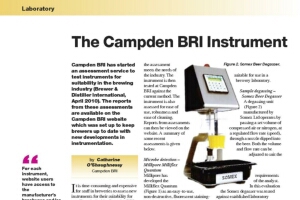 CIBD Membership Required
CIBD Membership Required
The Campden BRI Instrument Assessment Service
01/10/2011
Campden BRI has started an assessment service to test instruments for suitability in the brewing industry (Brewer & Distiller International, April 2010). The reports from these assessments are available on the Campden BRI website which was set up to keep brewers up to date with new developments in instrumentation.
 CIBD Membership Required
CIBD Membership Required
What can we all do to reverse the decline of the pub?
By: Paul Browning
01/10/2011
What can we do to reverse the decline of the British pub? The answer lies buried in this rather strange illustration – ‘Function of the two minds’. I believe the decline of the pub can not only be halted, but reversed. Possible? Yes. Probable? Definitely – if we all do our bit. To find out how – read on!
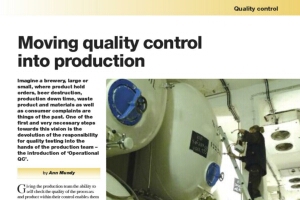 CIBD Membership Required
CIBD Membership Required
Moving quality control into production
By: Ann Mundy
01/10/2011
Imagine a brewery, large or small, where product hold orders, beer destruction, production down time, waste product and materials as well as consumer complaints are things of the past. One of the first and very necessary steps towards this vision is the devolution of the responsibility for quality testing into the hands of the production team – the introduction of ‘Operational QC’.
 CIBD Membership Required
CIBD Membership Required
One way PET kegs …offer a recyclable and economic alternative
By: Gary Dawkes
01/10/2011
Breweries in Europe are at the forefront of rising interest in new plastic beverage containers which are being marketed as an environmentally-friendly, economical alternative to metal kegs for draught beer.
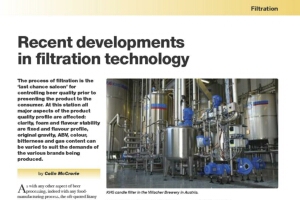 CIBD Membership Required
CIBD Membership Required
Recent developments in filtration technology
By: Colin McCrorie
01/10/2011
The process of filtration is the ‘last chance saloon’ for controlling beer quality prior to presenting the product to the consumer. At this station all major aspects of the product quality profile are affected: clarity, foam and flavour stability are fixed and flavour profile, original gravity, ABV, colour, bitterness and gas content can be varied to suit the demands of the various brands being produced.
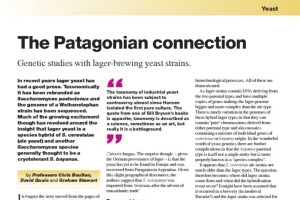 CIBD Membership Required
CIBD Membership Required
The Patagonian connection - Genetic studies with lager-brewing yeast strains.
By: Chris Boulton, David Quain, Graham Stewart
01/10/2011
In recent years lager yeast has had a good press. Taxonomically it has been rebranded as Saccharomyces pastorianus and the genome of a Weihenstephan strain has been sequenced. Much of the growing excitement though has revolved around the insight that lager yeast is a species hybrid of S. cerevisiae (ale yeast) and another Saccharomyces species generally thought to be a cryotolerant S. bayanus.
 CIBD Membership Required
CIBD Membership Required
Creating a stir - How novel mixing technology increases capacity
By: John Lazar, Thomas Paludan-Müller
01/10/2011
Carlsberg UK at Northampton is the first major brewery to make a significant plant-wide investment in novel liquid mixing technology during fermentation. Using equipment developed by Alfa Laval, the plant has dramatically cut fermentation time and this has helped the company meet higher production targets. The success of the technology could well have implications for the whole of the brewing industry.
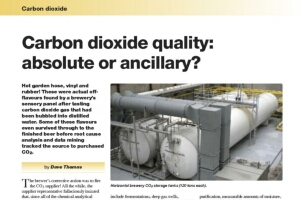 CIBD Membership Required
CIBD Membership Required
Carbon dioxide quality: absolute or ancillary?
By: Dave Thomas
01/10/2011
Hot garden hose, vinyl and rubber! These were actual offflavours found by a brewery’s sensory panel after tasting carbon dioxide gas that had been bubbled into distilled water. Some of these flavours even survived through to the finished beer before root cause analysis and data mining tracked the source to purchased CO2.
 CIBD Membership Required
CIBD Membership Required
Looking Eastwards - Windsor and Eton a year on
By: Roger Putman
01/10/2011
A few years ago there were not a lot of breweries in London. There was Fullers in Chiswick, Budweiser at Mortlake, a little further out – while Meantime and Zerodegrees out east were largely pub-based. Micros seemed daunted by high rentals, delivery difficulties and perhaps an unresponsive market for craft products.
Some of the content requires an active membership to view.
You can find out more here
Some of the content requires an active membership to view.
You can find out more here
